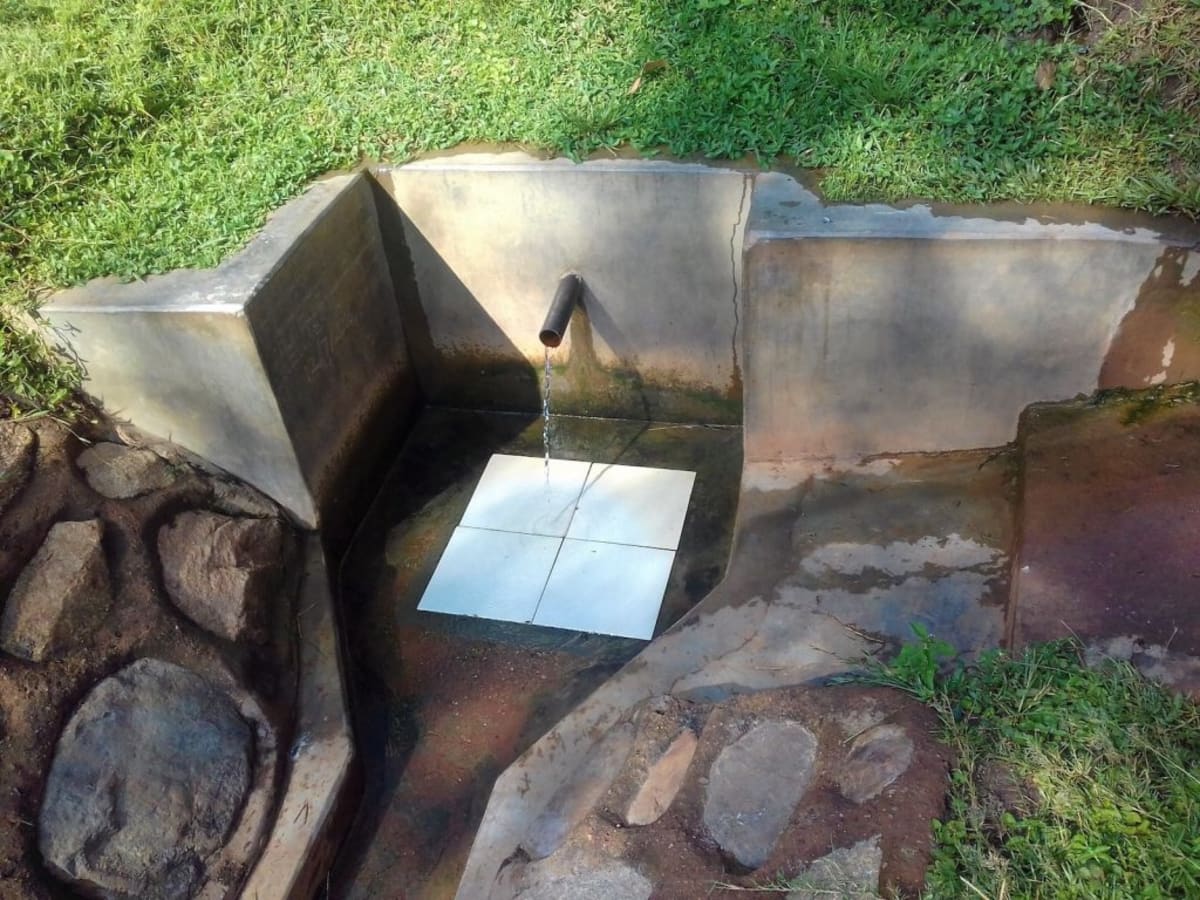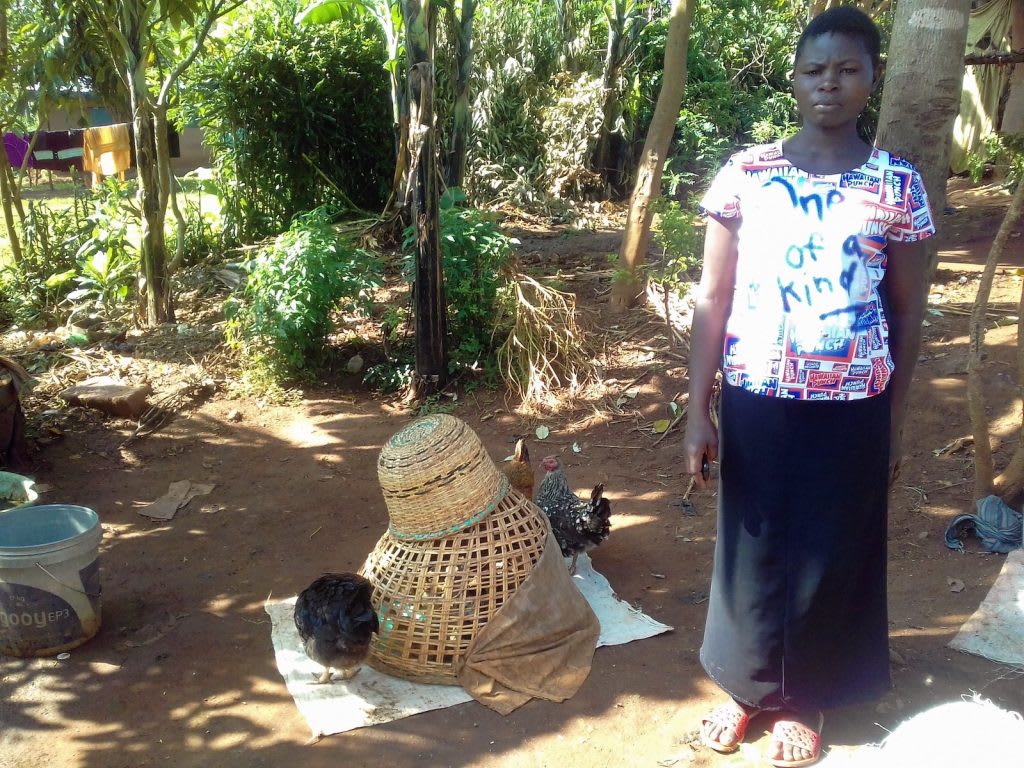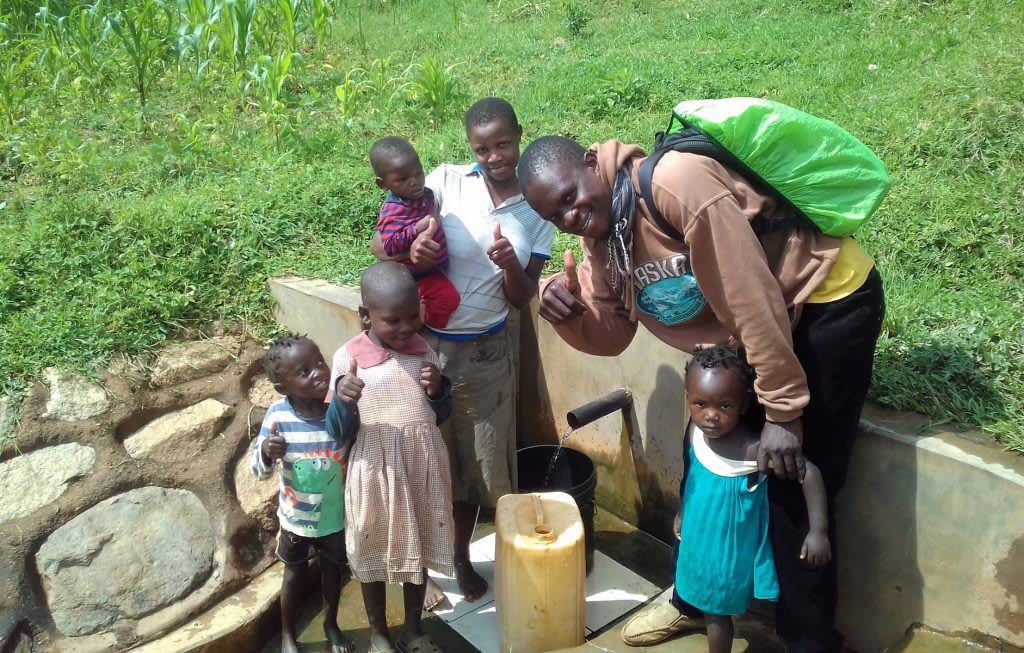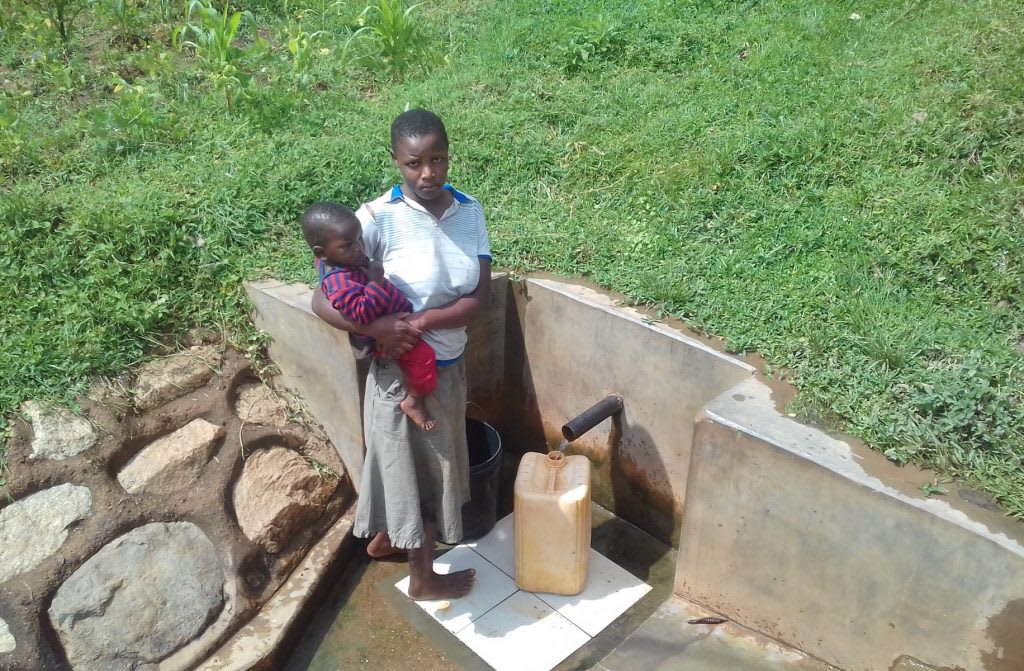This project is a part of our shared program with Western Water and Sanitation Forum (WEWASAFO). Our team is pleased to directly share the below report (edited for clarity, as needed).
Welcome to the Community
Mang'ang'a Spring is found in Mang'ang'a Village of Kidundu, Central Maragoli of Vihiga County. It is near the town of Marengo and is next to the Kakamega-Kisumu Highway. Mr. Nahason Lugalia is the owner of the land the spring flows through, and he generously allows his entire community to use its water.
The people here either work on their farm or at the market to earn enough money for food.
Water Situation
This spring quenches the thirst of both children from Nalea Education Center (a community school started to meet education demands of children born out of wedlock as a result of prostitution at Majengo Town) and the other adult community members.
The spring was named after Mang'ang'a Village because of the people's love their home.
The spring supplies water to over 35 households in Mang'ang'a and the 57 children who attend Nalea Education Center (30 girls and 27 boys). During the dry seasons, people from Majengo Town also resort to Mang'ang'a Spring because it flows no matter what the circumstances.
Mang'ang'a Spring is an open water point to all forms of contamination including but not limited to human contamination, surface runoff, animals, and agricultural activities. The community draws the water by dipping their containers in a pool they dug which helps make collection easier. Some members were spotted doing laundry at the spring and some aired out their clothes in the vicinity. "Once the spring is protected," said 68-year-old Joyce Muguza, "we will ensure it is fenced and that we enforce rules prohibiting anyone from washing at the spring. We cannot afford to contaminate the spring any longer."
Sanitation Situation
The majority of the homes in this village do not have sanitation facilities of their own. "Personally I lack a latrine," said Joyce, "I cross to my neighbor even in the night whenever I want to go for longs calls. I will be so grateful if I get one of the latrine slabs!" The families who have latrines of their own fear using them because a local woman fell in her latrine pit and died on the spot.
Community member Nicholas Lugalia said, "Most of the residents around this place lack adequate knowledge about use of mosquito nets and its relationship to malaria prevention. Messages on waterborne diseases and their control should be emphasized to help the community in disease prevention." Malaria is one of the more common diseases that the community battles, apart from sexuality transmitted infections. The community suffers from the negative consequences of prostitution promoted by commercial sex workers from Majengo Town.
Though there are a lot of areas that need improvement, the community is very excited about the prospect of hygiene and sanitation training. We expect there to be a good turnout of people who want to learn about tools and practices that can help them lead healthier lives.
Plans: Hygiene and Sanitation Training
Community members will be trained for two days on a variety of health, hygiene and sanitation topics. This training will result in community members donning the roles of health workers and water user committee members. The training facilitator plans to use PHAST (Participatory Hygiene and Sanitation Training), CLTS (Community-Led Total Sanitation), and ABCD (Asset-Based Community Development) methods to teach community members, especially the women and children who feel the burden of household responsibility. Training will equip each person with the knowledge needed to practice viable and effective health solutions in their homes and at the spring. It will also result in the formation of a committee that will oversee and maintain their new spring protection system. They will take up activities such as digging extra drainage and fencing out wild animals. Other training participants will take up the gauntlet of health promotion; they will be community health workers responsible for teaching others about the good hygiene and sanitation practices they learned during training.
During training, we will take this community on a transect walk to sensitize them to some of the more serious health threats. The transect walk will teach locals to watch for practices that go on and facilities that are present related to good health and hygiene. Sometimes, a participant feels shame when the group arrives at their household and points out things that are unhealthy or unhygienic; but in Kenya, this affects people to make a positive change. Training participants will also vote on and decide the families that should benefit from the five new sanitation platforms.
Plans: Sanitation Platforms
The five families (most likely Mama Joyce Muguza's family will be one) chosen by the community will receive a sanitation platform, which is a concrete floor that makes a great foundation for a safe and clean latrine. These families will prepare by sinking a pit that the concrete slab can be placed over. These five new latrines will go a long way in reducing the level of open defecation in this community!
Plans: Spring Protection
Locals are eagerly preparing for this spring protection project. They have agreed to gather the local materials needed for construction to begin, which include sand, ballast, hardcore, bricks, fencing poles, and even a few helpful hands.

 Protected Spring
Protected Spring
 Rehabilitation Project
Rehabilitation Project
































